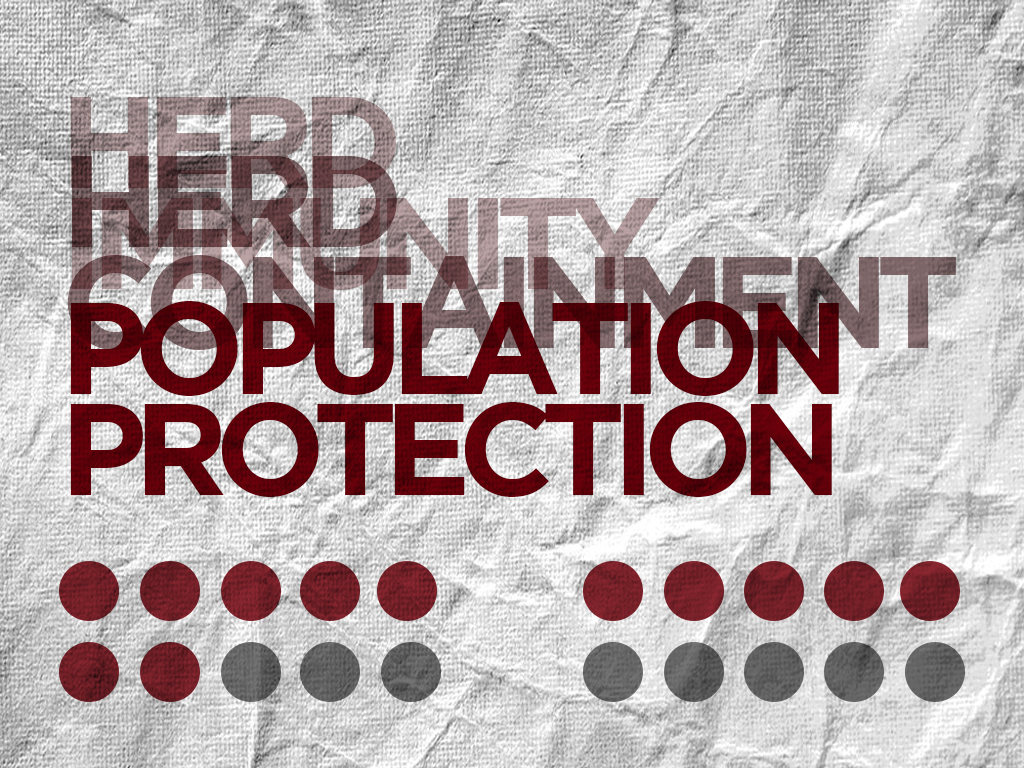From “herd immunity” to “population protection”: What’s the difference?
CHEERS TO InterAksyon.com for catching on to the government’s latest semantic ploy, which essentially lowered the national vaccination target. Other reports merely echoed the Health department’s announcement without saying why it was questionable.
Last May 26, DOH Usec. Myrna Cabotaje said the government is shifting its goal to “population protection” of 50 to 60 million from the initial objective of “herd immunity” with 70 million vaccinated. She said the new term entails decreasing hospitalization and deaths through mass immunization, with particular focus on the “NCR plus bubble.” Cabotaje cited the tight supply of the vaccines globally. She said using “herd immunity” involves continuous protection against the virus, but said that we have to consider several “criteria” such as the effectiveness of the vaccines against variants. She also noted that at this time, there is a lack of evidence to support the need for booster shots.
InterAksyon said the new goal “however, is also similar to the objectives of achieving herd or community immunity in a country.” The report added tweets from ordinary Filipinos, who thought the change in terms was an attempt to cover up the slowness of the vaccine program.
InterAksyon also featured a tweet from the Philippines Vaccine Tracker, which said that government had changed its goals three times in the span of two months: from “herd immunity” in March, to “herd containment” in mid-May, and ultimately, to “population protection” in late May.
An opinion piece by Federico Pascual, Jr. in The Philippine Star correctly summarized what the term change meant: “Population protection, the health department said, entails reducing the number of deaths and hospitalized patients through vaccination. But this has been the grand objective all along, whatever terms are used, except that the threshold has been lowered.”
By simply recording the statement, which most of the reports did, journalists allowed the government to use words to cover up its failure to achieve the previously set goals. Under any term, 70 million vaccinated Filipinos would decrease vulnerability to transmission and hospitalization and reduce deaths. The change in language seems designed to purposely suggest that government has found even better objectives, when all it is setting out to do was covered in the first place by the original target of “herd immunity.”
In reporting the change of words, the media should stress the reality that the slow pace of vaccination and the high level of vaccine resistance prevents government from achieving the goal that it set out to do.
Transparency and accountability standards should urge more honesty on the part of government. But media should do their part so as to enforce some level of government accountability. These include asking questions that need to be asked so as to force officials to explain what they’re saying. It is important for people to understand if indeed there are overwhelming difficulties confronting the IATF and its officials. But if there are other forces at play, the media are obliged as well to report the facts as they see it.
The issue of failed objectives is writ large in the way the government has addressed the pandemic. It is time for the media to do more and to dig deeper into the failure of implementation, especially the slow pace of the vaccination program. The IATF had enough time to prepare for it and government has received aid and loans to support and achieve its targets.
The failure of implementation may be due to incompetence, laziness, the lack of management systems, the misallocation of budget or corruption in the allocation of resources. Some of these require investigative skills that the media may not have to do the job. Alas, that is also part of the problem.

Leave a Reply